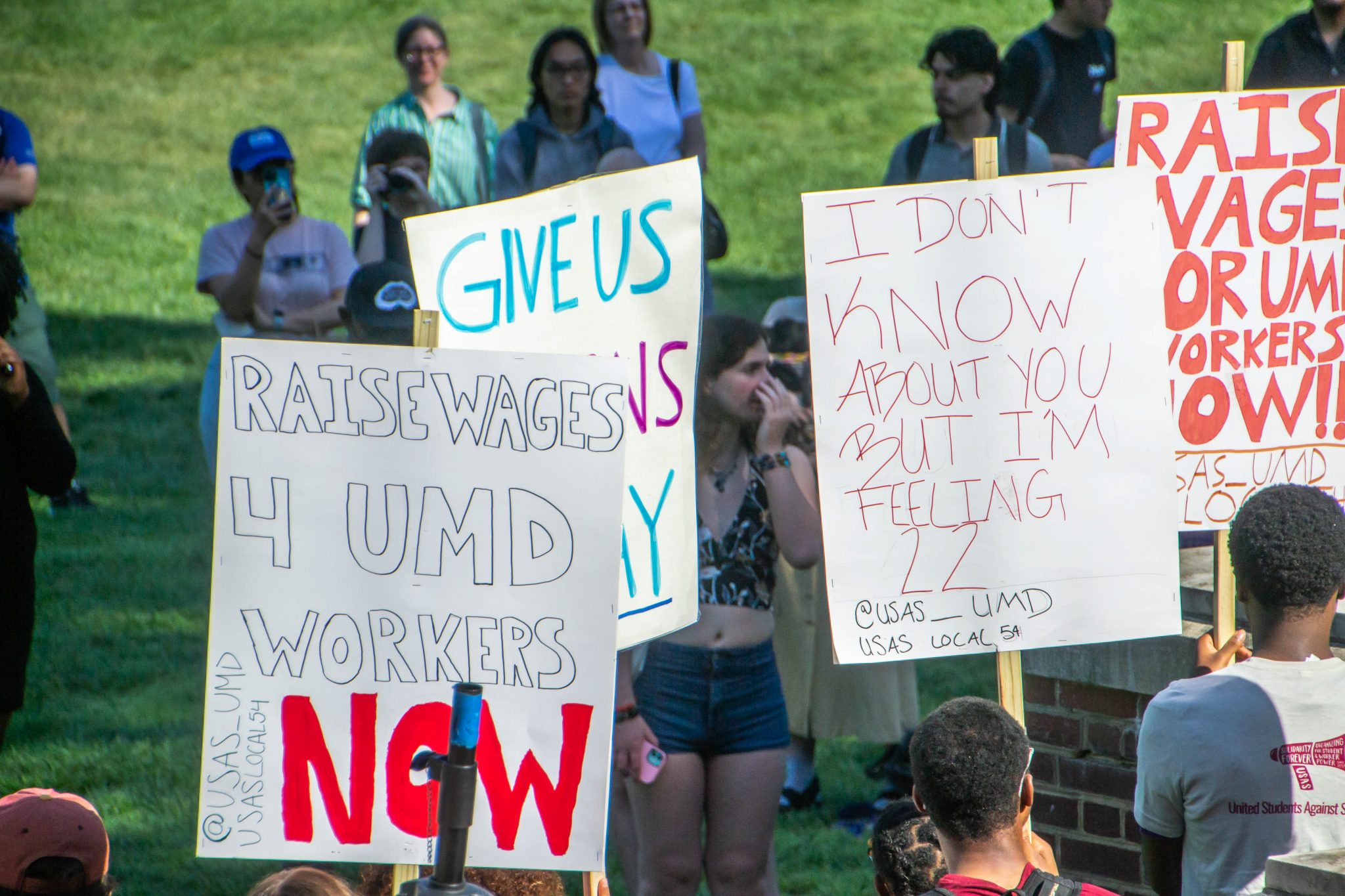University of Maryland students and staff are advocating for an increase in the campus-wide hourly wage to $22 as part of the Time for 22 campaign.
The university raised the campus-wide minimum wage to $15 per hour in January. That coincided with the state bumping its minimum wage from $12.50 to $13.25 per hour. The state projects that the minimum wage will be increased for the second consecutive year to $14 on Jan. 1, 2024.
The university’s United Students Against Sweatshops chapter president Grace Orellana launched the Time for 22 campaign in the fall 2022 semester. She was also a part of the Fight for 15 campaign but said $22 per hour is necessary for employees of the university.
“Yes, we got the victory of $15 an hour, but it’s still not enough,” the senior immersive media design major said. “A lot of workers aren’t just student workers trying to pay off tuition, but they’re also people with families that they need to provide for, and $15 isn’t even enough to provide for themselves.”
[UMD employees ask for higher raises to support cost of living]
Todd Holden, president of the American Federation of State, County and Municipal Employees Local 1072 — the employees’ union at this university — said many on-campus staff members struggle to afford their cost of living with their university job alone.
The Massachusetts Institute of Technology Living Wage Calculator, which breaks down the necessary hourly rate for employees within a certain county to support themselves, calculated that employees with no dependents living in Prince George’s County need to be making at least $22.31 per hour.
Holden said he has seen employees who haven’t been able to sustain themselves or their families with just one job.
“This isn’t necessarily an aspirational thing for workers. This is actually the product of what we feel to be real behind the curve, old-fashioned wage policy,” Holden said. “But that’s just a common narrative from lots and lots of workers who work second jobs and live in shared housing situations or multigenerational housing situations.”
In a Thursday email to The Diamondback, this university said they did not have a statement on this matter because it is related to union issues. The university also noted that “hourly student workers benefited from an increase to a $15 hourly minimum wage three years ahead of the state’s timeline.”
[UMD student employees voice concerns over work-life balance, wages in USAS survey]
Quentin Hoglund, a junior government and politics major, is a Resident Assistant in Ellicott Hall and student worker at Eppley Recreation Center. He said Eppley employees’ shift schedule can make it hard for workers paying for groceries and rent to support themselves.
The cost of living is increasing in College Park, which means community members need to be active in pushing for higher wages, Hoglund said. He added that an increase in wages would also improve this university’s relationship with its student workers.
“I feel like once I put on my red polo and go into Eppley, people don’t see me as a student anymore. They don’t see me as a person anymore. They just see me as an extension of the university,” Hoglund said. “I’m a representative of the university and so it sucks when the university doesn’t extend that respect back to me.”
Orellana said a lot of USAS’ work has involved efforts to raise student awareness. That means encouraging students to advocate for themselves in the workplace and giving them an open and safe environment to discuss issues, she said.
AFSCME has been taking a similar approach to USAS to inform university employees, Holden said.
“We’re certainly making our members aware of the fact that our fight for wages, currently at the bargaining table, is also occurring in conjunction with the efforts of other campus groups,” Holden said. “None of the experiences of people on campus are monolithic.”



